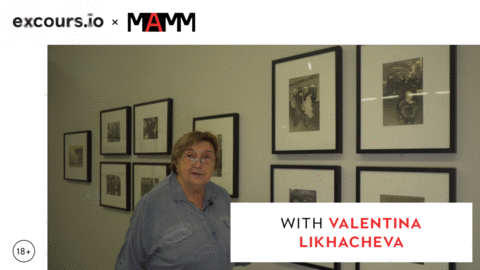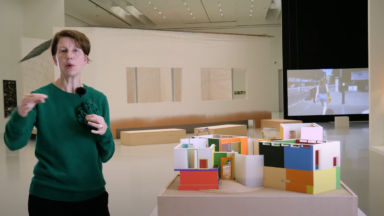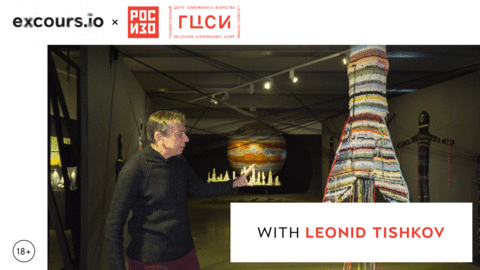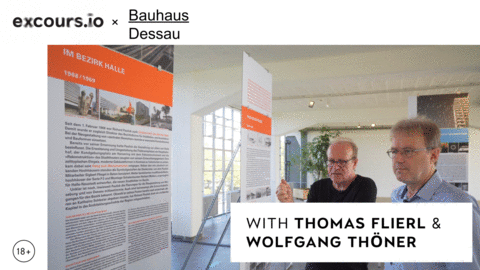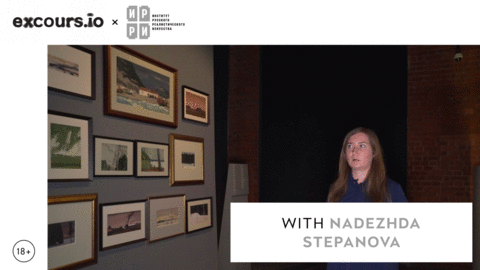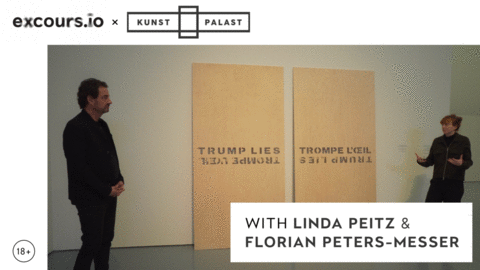“Heart of a Dog” : Adventures of a Banned Book. A Monstrous Story
The exhibition Heart of a Dog: Adventures of a Banned Book. A Monstrous Story delves into the provocative themes of banned literature, spotlighting the cultural ripples caused by censorship. Through a compelling blend of visual art and literary references, this showcase invites visitors to reflect on the power of words and the resilience of artistic expression. By intertwining the narrative of Mikhail Bulgakov’s infamous novella with contemporary artistic interpretations, the exhibition not only celebrates the defiance against oppression but also fosters a dialogue on freedom and creativity in our modern world.
Why should you watch this?
This exhibition boldly confronts the legacy of censorship through Mikhail Bulgakov’s iconic novella. This engaging showcase interweaves contemporary artistic interpretations with the rich narrative of a story that has faced bans and challenges throughout history. Visitors will be invited to reflect on the resilience of creativity and the vital role of free expression in society. By exploring the intersection of literature and visual art, this exhibition not only honors those who defy oppression but also ignites crucial conversations about the boundaries of artistic freedom today.
Mikhail Grachev. Soviet Daily Life. 1930s—1960s
In Mikhail Grachev. Soviet Daily Life. 1930s—1960s through an array of photographs, artifacts, and multimedia installations, attendees are invited to experience the complexities of everyday existence during a transformative era in Russian history. The exhibition captures the interplay of culture, politics, and personal narratives, reflecting how art and design were interwoven into the fabric of daily routines — from the bustling streets to communal celebrations. By showcasing both the mundane and the extraordinary, the exhibition offers a unique lens on how people lived, worked, and dreamt in a time of significant socio-political change, encouraging visitors to ponder the lasting impact of this period on contemporary society and culture.
Why should you watch this?
Within this exhibition you can immerse yourself in a pivotal chapter of history at this thought-provoking exhibition that brings to life Soviet daily life from the 1930s to the 1960s. Explore a rich collection that reveals the nuances of everyday existence during an era marked by both creative expression and political upheaval. From candid photographs to everyday objects, the showcase highlights the resilience and spirit of individuals navigating a complex social landscape. Beyond mere nostalgia, this exhibition invites you to reflect on how art shaped identity and community, providing timeless lessons on the interplay between personal life and broader societal movements.
HOW TO SURVIVE ― Art as Survival Strategy | with Carina Plath
The group exhibition presents a compelling exploration of how art provides resilience in times of personal and societal crisis. The exhibition features works by renowned artists like Gustav Metzger, Shusaku Arakawa, and Alina Szapocznikow, each of whom faced extreme adversity and transformed their experiences into profound artistic statements. Whether addressing environmental destruction, illness, or existential threats, these artists used creativity as a means to survive and challenge the limits of human endurance. The exhibition emphasizes the power of art to propose alternative perspectives when the world seems trapped in binary thinking. By engaging with radical artistic responses to crisis, visitors are invited to reflect on how creativity can offer strength, hope, and new possibilities for navigating the uncertainties of modern life. Art, in this context, becomes more than expression — it becomes a strategy for survival and transformation.
Why should you watch this?
The exhibition tackles pressing issues like climate change, personal trauma, and social upheaval, and having a knowledgeable guide helps to bring those themes to life. It’s not just about admiring the art; it’s about understanding the stories and survival strategies that inspired each piece. This context makes the art resonate even more, helping you connect with the messages in a meaningful way. In a time when we’re all looking for ways to navigate challenges, a guided tour offers fresh insights that can spark reflection and inspire hope.
Vasily Ulitin. Elegy
Vasily Ulitin. Elegy is a poignant exploration of memory and the human experience, showcasing contemporary artworks that delve into themes of loss and nostalgia. This compelling exhibition brings together a diverse array of artists, each offering a unique lens on the fragility of existence and the echoes of the past. Through striking visuals and thought-provoking installations, visitors are invited to reflect on the transient nature of life and the artifacts of memory that linger in our minds. The careful curation weaves a narrative that transcends individual perspectives, creating a shared space for solace and contemplation.
Why should you watch this?
This exhibition is an emotional journey that invites you to confront the depth of human experience through the lens of contemporary creativity. By showcasing artists who grapple with themes of memory, loss, and the passage of time, this exhibition resonates with anyone reflecting on their own stories. Each piece acts as a portal into personal and collective memories, encouraging introspection and dialogue. The thought-provoking installations challenge you to consider how we hold onto the past and the beauty and pain that intertwine in our lives. Whether you’re an art aficionado or simply curious, this guided tour offers a unique opportunity to engage with profound artistic expressions that linger in the heart and mind long after you leave.
Actually, the Dead Are Not Dead. Una forma de ser. | Introduction
The exhibition explores the interplay between celebration and political expression, rooted in the context of marginalized communities. Drawing inspiration from the Bergen Assembly 2019, this exhibition examines how festivities serve as platforms for social emancipation and self-determination, particularly within the Rom*nja, Flamenco, and Bohemian cultures since the 19th century. By interweaving historical and contemporary works, the exhibition highlights the transformative power of communal gatherings, where joy, rebellion, and artistic innovation intertwine. Una forma de ser invites visitors to reflect on the significance of togetherness, creativity, and resilience in the face of adversity.
Why should you watch this?
Augury of Cosmos
The exhibition Augury of Cosmos showcases the innovative works of contemporary artists, who masterfully blend traditional techniques with modern themes to explore the complexities of human experience. Through a diverse array of mediums, including painting and installation, viewers engage with the interplay of memory, identity, and the passage of time. Thought-provoking pieces challenge conventional narratives, encouraging a dialogue between the past and present. This exhibition not only highlights unique artistic vision but also serves as a reflection on the broader cultural landscape, making it a must-see for anyone interested in the evolution of contemporary art.
Why should you watch this?
Step into the transformative world of contemporary art at the exhibition Augury of Cosmos, showcasing the extraordinary work of artist Mikhail Slogunov. This immersive event delves into the intricate relationship between identity, memory, and the myriad forces that shape our perceptions of self and otherness. Slogunov’s evocative pieces challenge viewers to confront societal norms and personal biases, making it not just an exhibition, but a profound exploration of the human experience. With a diverse array of multimedia installations, the show encourages dialogue and introspection, inviting you to engage deeply with art that resonates on both emotional and intellectual levels.
Bauhaus – Shanghai – Stalinallee – Ha-Neu. The life of architect Richard Paulick, 1903–1979
Why should you watch this?
Nissky. Horizon
Nissky. Horizon is a compelling exhibition at the Institute of Russian Realistic Art that explores the intricate relationship between contemporary art and traditional Russian realism. Featuring a diverse array of artists, the exhibition invites viewers to engage with works that reflect on cultural heritage while pushing artistic boundaries. Each piece serves as a dialogue between past and present, showcasing how contemporary creators reinterpret classical themes and techniques. This fusion not only honors the legacy of Russian art but also challenges perceptions, encouraging a deeper understanding of identity and artistic expression in today’s globalized context. Through thought-provoking installations and evocative imagery, Nissky. Horizon celebrates the enduring relevance of realism in contemporary discourse.
Why should you watch this?
This exhibition invites you to explore the intricate interplay between tradition and innovation in contemporary art. This showcase features a diverse array of works that challenge conventional narratives, offering fresh perspectives on cultural identity and artistic expression. By engaging with both established and emerging artists, the exhibition creates a dialogue that resonates with today’s societal themes. Don’t miss this opportunity to witness how contemporary art reflects and reframes our understanding of the world — each piece serves as a unique lens through which to view the complexities of modern life. Immerse yourself in this vibrant exploration and discover the transformative power of art.
TIME FOR OUTRAGE! Art in Times of Social Anger | Trumpism
Can anger and rage be justified in a world riddled with oppression and inequality? Are these emotions destructive forces or vital catalysts for social change? As democracy faces crises and populism gains ground globally, these questions have sparked renewed debate. Contemporary artists have responded, using their work to navigate and challenge the pressing issues of our time.
The exhibition ‘Time for Outrage!’ in Düsseldorf explores these questions through six thematic blocks: Right-wing Shift, Trumpism, Protest, Postcolonialism, Feminism, and Discrimination. Across a diverse range of mediums — including installations, drawings, paintings, sculptures, photography, and video art — 40 international artists immerse viewers in the visceral realms of protest, social dissent, and public anger. The exhibition doesn’t just present anger as a raw emotion; it portrays it as a vehicle for dialogue, resistance, and empowerment in the face of systemic injustice.
A substantial portion of the works on display come from the collection of entrepreneur and collector Florian Peters-Messer, whose commitment to socially engaged art amplifies the urgent messages these pieces convey.


